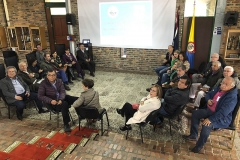There is evidence that bilingual individuals process language in ways that differ essentially from those of monolinguals, resulting in, among other aspects of language development, their speech acts being encoded differently.
These can be referred to as psycholinguistic differences of bilinguals that may have significant consequences in their schooling. The purpose of this blog entry is to examine bilingualism from different perspectives, focusing on the fact that bilingualism is not twofold monolingualism.
The psychological state of an individual who has access to more than one linguistic code as a means of social communication is known as bilinguality. It includes multiple aspects of a bilingual identity such as emotions, preferences, anxiety, personality, social influence, and reference groups[1].
In a globalized world, it is necessary to pay attention not only to bilingualism itself, but also to the psychological, physiological, and social environments within which bilingualism develops. This leads to the awareness of the effects that the social context has on bilingualism.
As far as psycholinguistic constructs are concerned, there are two concepts related to bilingualism worth mentioning, namely BICS (Basic Interpersonal Communication Skills) and CALP (Cognitive Academic Language Proficiency). The difference between them is that the former refers to the conversational fluency in a language, whereas the latter refers to students’ ability to understand and communicate, both orally and in writing, concepts and ideas that are key to success in school.
One of the most renowned scholars of bilingualism, Jim Cummins, posits that it takes five to seven years to develop in an additional language those academic language skills of CALP. At CBJML, students are exposed to CALP skills by means of the bilingual areas from preschool to the senior grade, apart from the regular English as a Second Language instruction.
Furthermore, the same author considers the construct of the interdependence of the two languages of a bilingual. This interdependence proposes that “to the extent that instruction in Lx (Language x) is effective in promoting proficiency in Lx, transfer of this proficiency to Ly (Language y) will occur provided there is adequate exposure to Ly.”[2]
Bilingualism at CBJML
Bilingualism at our school intends to be multi-directional, having this transfer across languages in two ways, where L1 skills build up on L2’s and vice versa. In this vein, the first language needs not to be fully developed before the second language is introduced in school. It is the school’s responsibility to guarantee that children have adequate exposure to each language.
This is further supported by what is known as Common Underlying Proficiency (CUP), which states that the two languages of a bilingual individual are not “stored” in the brain separately, and rather co-exist relying on a common underlying language proficiency. As a result, although a person may have different linguistic patterns in each of their languages, the source that makes language use and practices possible is the same for each one of them.
Children who have developed literacy in one language are bound to progress more significantly in acquiring literacy in an additional language as the knowledge of linguistic patterns and their prior knowledge of their contexts, transfer across languages.
This leads to the premise that what is learned in one language does not have to be learned again in another because the conceptual knowledge transfers; there might just be a matter of teaching new nominations. However, it is paramount for students to be given extensive practice using both languages in academic ways. Ultimately, these psycholinguistic constructs support the idea that developing bilingualism can lead to improved linguistic results and academic success.
[1] Pavlenko (2005), Pavlenko and Blackledge (2004)
[2] Cummins (2000)



